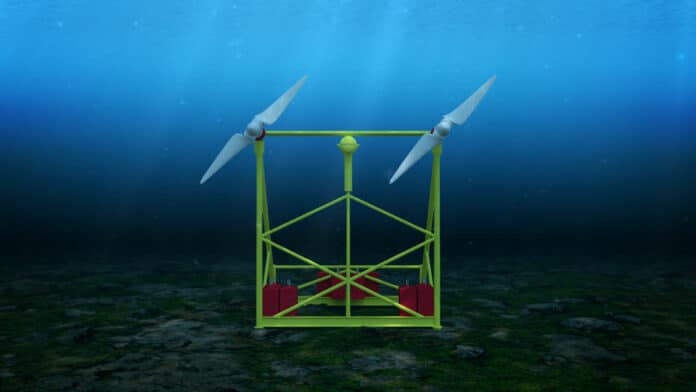Energies PH has partnered with Inyanga Marine Energy Group to construct Southeast Asia’s first tidal power generation plant in Capul Island, Northern Samar, Philippines.
The San Bernardino Strait, known for its strong marine currents, will host this 1MW project, which will utilize Inyanga’s HydroWing tidal stream technology. The project is scheduled for deployment in late 2025, and the Engineering, Procurement, and Construction contract has been awarded to Inyanga Marine Energy Group.
As part of the project, the HydroWing tidal stream turbines will be integrated into the electrical network of Capul, an off-grid island that currently depends on a 750 kW diesel power plant. The project’s first phase will involve constructing a 1MW tidal power plant, which will be connected to a microgrid network along with solar PV and energy storage. The goal is to provide a dependable, sustainable, and cost-effective alternative to fossil fuel-based power production.
“As we embark on this pioneering tidal power plant for the Philippines, our vision is to replicate this in several off-grid sites all over the country to provide electricity in the hinterlands,” Antonio Ver, co-chairman and CEO of Energies PH, said. “We see the initial project in Capul as a catapult to achieving our goal of helping create sustainable communities across the Philippines. The electric power that reaches families in remote areas enables them to have better access to education, health services, and livelihood opportunities.”
Richard Parkinson, CEO of Inyanga Marine Energy Group, said: “We are looking forward to working with Energies PH on the delivery of this transformational project for the region. Tidal stream energy is the most predictable and reliable form of renewable energy. Our HydroWing technology is at the cutting edge of innovation and provides a cost-effective solution to harvesting the power of the ocean’s tides.”
“This exciting project will create a step change for the remote community on Capul. It will bring tidal energy to the region of Southeast Asia for the first time,” adds Jean-Christophe Allo, Commercial Manager at Inyanga. “As the project incorporates an onshore storage facility, the tidal turbines will provide continuous 24/7 power supply. Right now, Capul has only 8 to 16 hours of energy per day, with several blackouts. We will provide 24/7 reliable and renewable electricity.”
Other tidal power generation sites planned for subsequent deployment by San Bernardino Ocean Power Corporation are in San Antonio Island, also in Northern Samar, and Calintaan Island in Matnog, Sorsogon.
The Southeast Asia Energy Transition Partnership has identified the county’s location and archipelagic features as having significant marine energy potential. Although offshore wind is the region’s most commercially viable renewable technology, small marine energy pilot systems are seen as an option to provide power in off-grid areas like islands and remote locations.
However, the main challenges to deployment are that the technologies are quite new, and the financial institutions view these as high-risk projects. The Philippines has set an ambitious target to increase the share of renewable energy to 35% by 2030 and 50% by 2040.
